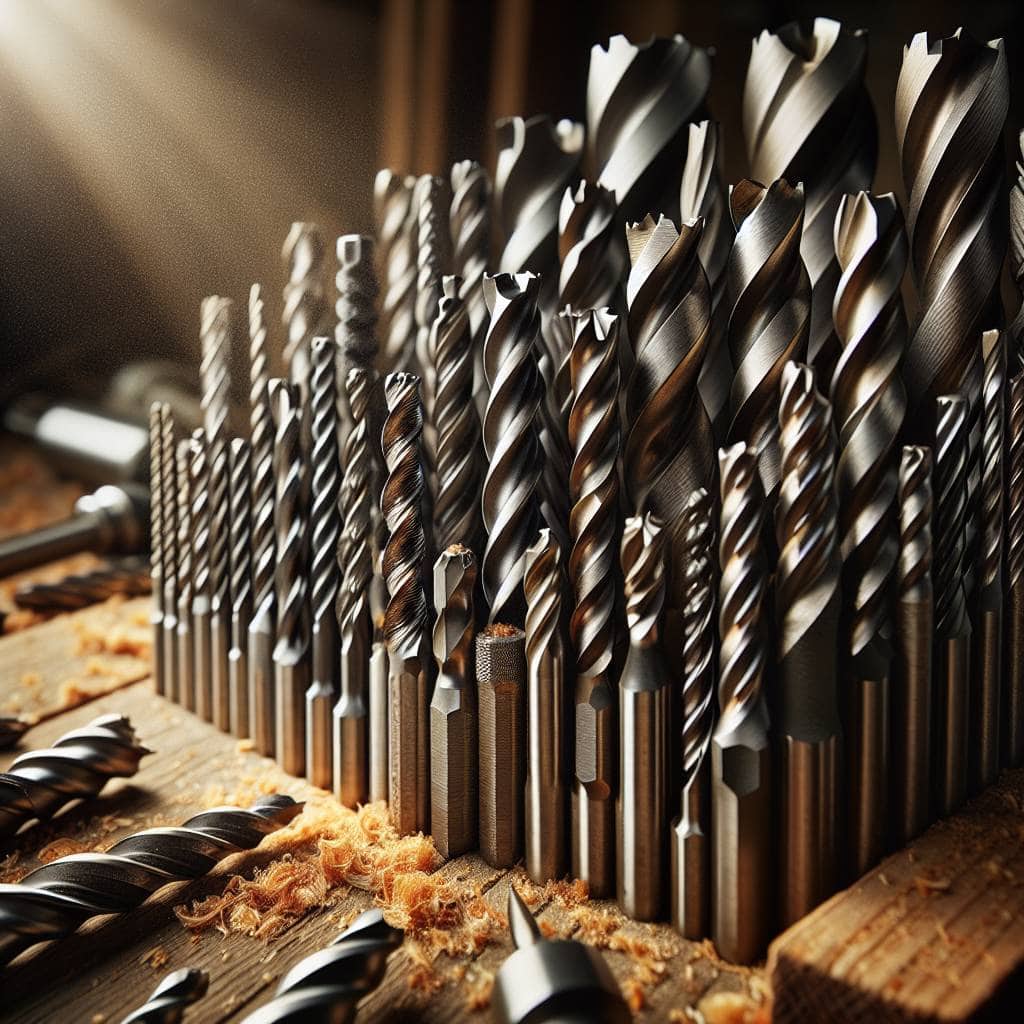Ever had one of those days where you think you know what you’re doing, only to find out you’re as clueless as a chicken trying to read a blueprint? That was me, staring at a pile of drill bits, each one looking as foreign as an alien artifact. I figured a drill bit’s a drill bit, right? Wrong. Turns out, my grand plan to hang a simple shelf transformed into a comedy of errors, starring a splintered wall and a drill bit that was more mangled than useful. That’s what happens when you try to conquer a fortress of concrete with a bit meant for wood. Lesson learned: understanding your tools is as crucial as bacon in a breakfast burrito.

So, let’s avoid the same pitfalls I fell into. What’s the difference between a spade bit and a Forstner bit, and why should you care? We’ll dive into the nitty-gritty of wood, metal, and masonry drill bits, breaking it down so even if you’ve got two left thumbs, you can still hold your own in the workshop. By the end, you’ll know what bit to grab for each job, like a seasoned mechanic reaching for the right wrench. Get ready to turn confusion into clarity, one drill bit at a time.
Table of Contents
The Day I Realized Spade Bits Aren’t Just for Digging Holes in Wood
I was elbow-deep in sawdust, trying to wrangle a stubborn piece of pine into submission, when it hit me like the first thunderclap of a summer storm. I’d always thought of spade bits as one-trick ponies, perfect for gouging holes in wood and little else. But that day, with the afternoon sun slicing through the workshop windows, I stumbled onto a whole new world of possibilities. You see, spade bits are the unsung heroes of the drill bit world, carrying the kind of versatility that could make a Swiss Army knife blush.
Imagine this: you’re staring at a Forstner bit, all polished and precise, dreaming of the clean, flat-bottomed holes it promises. Then, in the corner of your eye, you spot the spade bit—rough around the edges but dependable, like an old friend who knows how to fix your tractor with duct tape and sheer willpower. That’s the moment I realized spade bits don’t just dig—they carve, they shape, they craft. They’re the wildcards in your toolbox, ready to tackle more than just wood. Sure, they’re not for metal or masonry—that’s a job for the heavyweights like cobalt or carbide bits—but give them some room to breathe, and they’ll surprise you with their nimble dance through plywood and soft woods, leaving Forstner-like precision in their wake.
The day I stopped pigeonholing spade bits was the day my projects took a turn for the better. It’s like discovering that the old pickup you’d written off as a relic still had some serious horsepower under the hood. I began to see them as sculptors rather than mere drudges, using their flat blades to slice through wood with an artist’s touch. And in that realization, I found a new respect for the tools at my disposal, each with its own song to sing if only I’d listen closely enough. That’s the thing with understanding your tools—it’s not just about knowing what they’re made for, but discovering what they can become in the right hands.
The Drill Bit Epiphany
In the world of drill bits, understanding each type is like knowing the difference between a whisper and a shout—wood, metal, masonry, Forstner, spade—choose wisely, or your project will scream at you.
The Art of Drilling: A Journey in Bits and Pieces
When you’re in the thick of it, drilling through life’s layers one bit at a time, each choice becomes a story in itself. Like a spade bit’s reckless ambition to chew through wood, I’ve learned that sometimes you need that raw, unfiltered energy to get past the first hurdle. But then there are moments you need precision—like the steady grip of a forstner bit carving out perfection. Each has its own rhythm, its own song, and knowing when to switch gears is half the battle.
And isn’t that just life? Whether you’re tackling metal with a cobalt bit or dancing around the fragile edges of masonry with a carbide tip, the lessons go deeper than the surface. It’s about understanding the material you’re up against, respecting its nature, and choosing your tools wisely. Every shard of metal, every curl of wood—it’s all part of a bigger picture. And as I stand back and look at the holes I’ve made, I see more than just gaps. I see a map of where I’ve been and where I’m heading. Let’s keep drilling, my friends. The road is long, but the journey is what tunes the engine of our understanding.